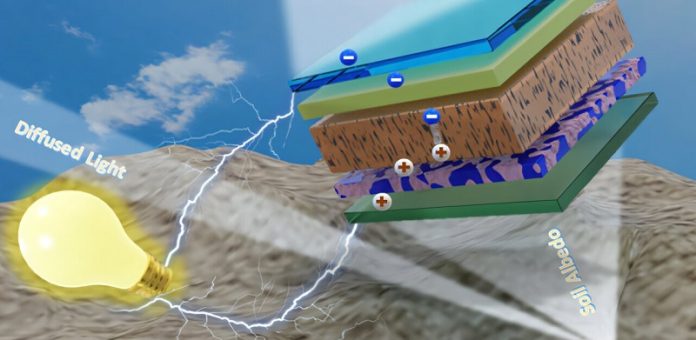
Researchers from the Indian Institute of Technology (IIT) Dharwad have made a major breakthrough in solar energy by improving bifacial perovskite solar cells.
These special solar cells can absorb sunlight from both sides, increasing their efficiency.
The team introduced a new type of transparent electrode that boosts performance and durability, making these solar cells even more promising for future energy solutions.
The researchers developed a hybrid transparent electrode made of NiO/Ag/NiO (NAN), which allows more light to pass through while maintaining low electrical resistance.
This three-layer structure was created using a low-energy technique called physical vapor deposition.
The result was a thin, effective electrode that enhances both efficiency and lifespan.
When this new transparent electrode was added to the solar cells, they showed power conversion efficiencies (PCE) of 9.05% and 6.54% when exposed to sunlight from different sides.
The high bifaciality factor of 72% proves the cells’ ability to absorb light from both directions effectively.
Even more impressive, these bifacial solar cells maintained 80% of their original efficiency for over 1,000 hours without any protective covering. This shows they are highly durable and can last a long time in real-world conditions.
In addition to generating power, these solar cells allow infrared light to pass through, making them suitable for applications like thermal windows and optoelectronic devices.
Their thin design (less than 40 nm) makes them easy to integrate into building materials, tandem solar panels, and even vehicles.
Professor Dhriti Sundar Ghosh, the senior researcher, believes this breakthrough could lead to new applications in agrivoltaics (solar panels used in agriculture), automotive technologies, and advanced energy systems.
By making solar panels more efficient and long-lasting, this innovation brings us one step closer to cleaner, more sustainable energy.
This discovery highlights the great potential of bifacial perovskite solar cells and how they can transform the future of solar power technology.



